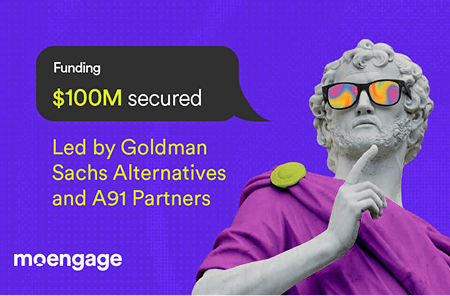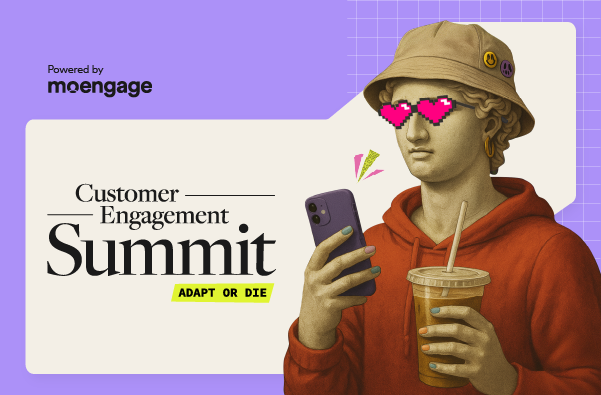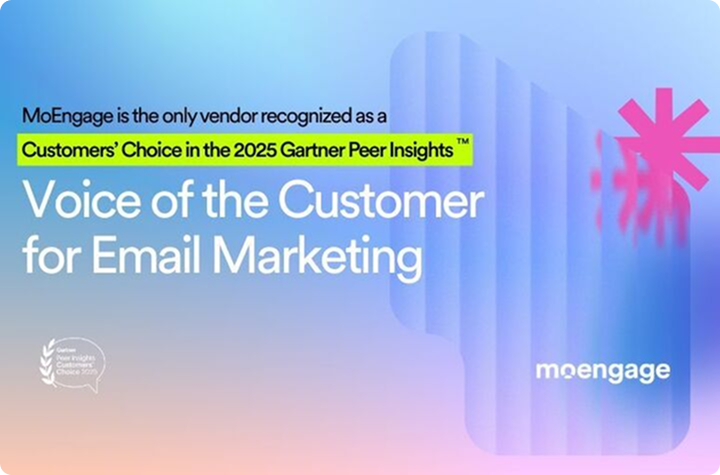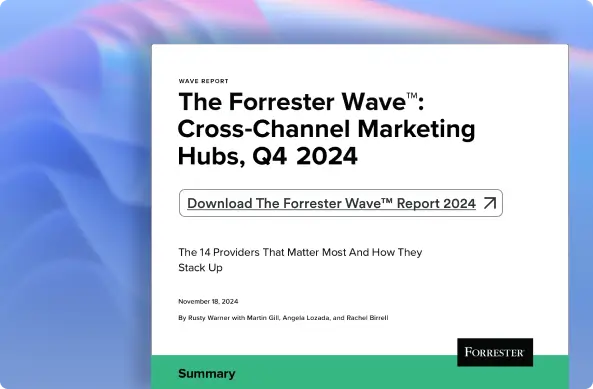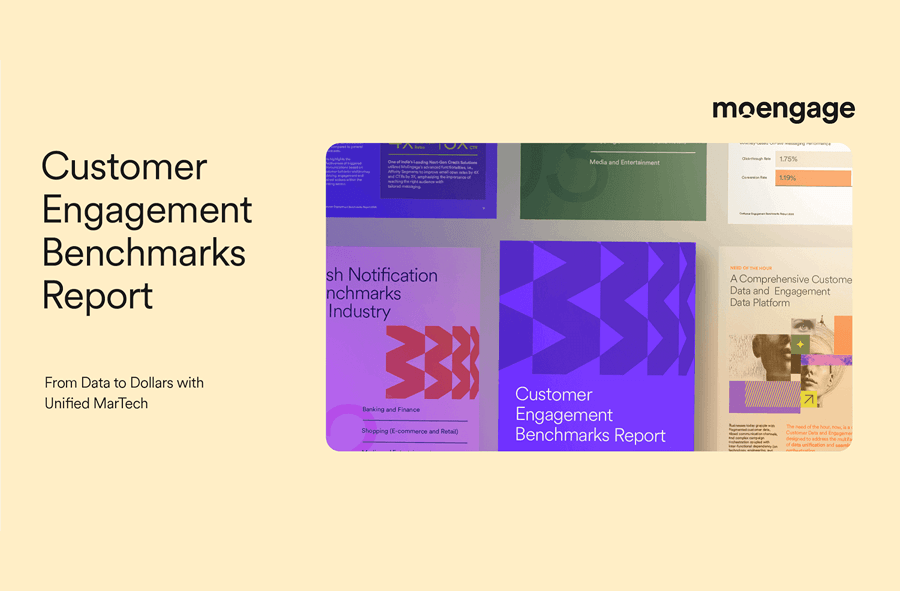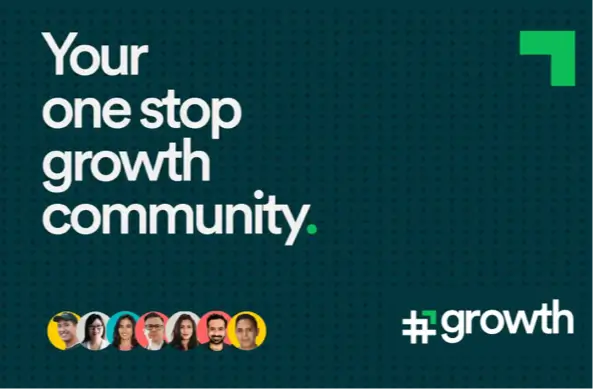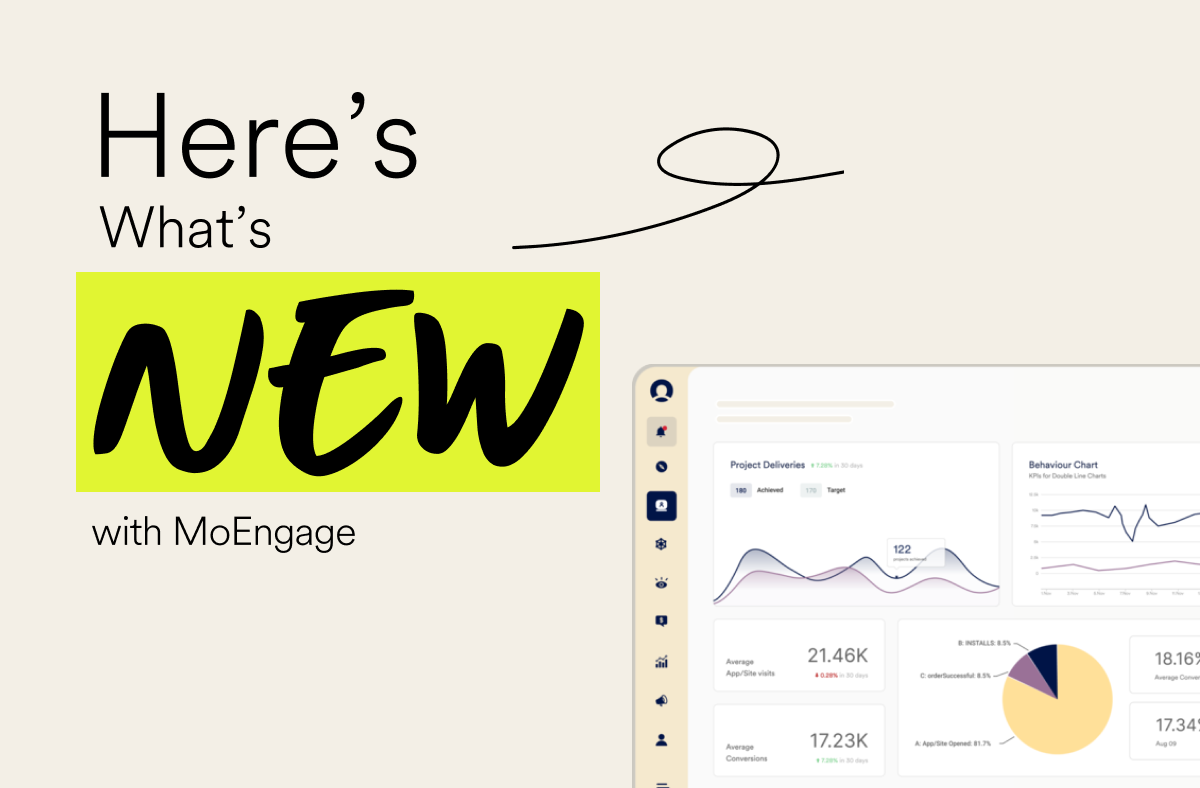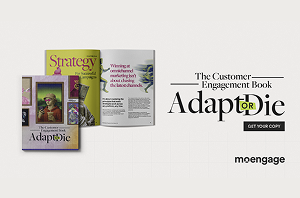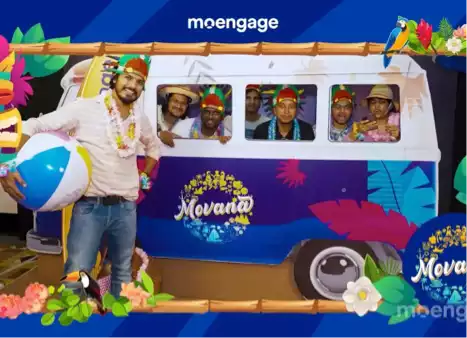Top 5 Takeaways from the Customer Engagement Summit: Adapt or Die
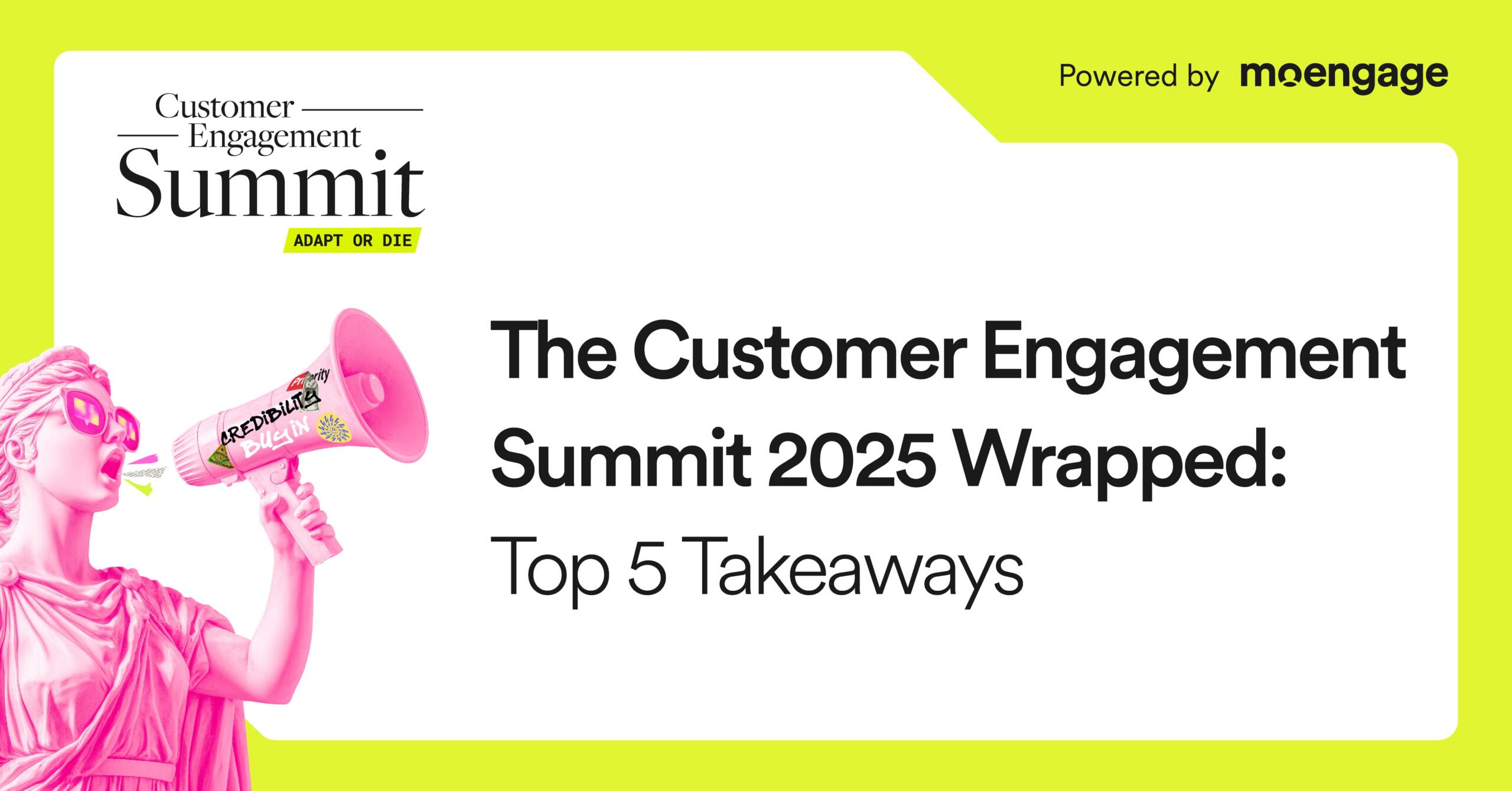
Reading Time: 5 minutes
The future of marketing isn’t just about adopting new technology; it’s about using it to build more human, meaningful, and relevant connections. But how do you scale empathy in a world of automation and data?
This was the central question that brought together over 150 B2C marketing professionals and 19 leaders from top brands, including T-Mobile, Domino’s, Mejuri, Amazon Music, and Loblaw, at MoEngage’s recent event, The Customer Engagement Summit: Adapt or Die. Held on September 24th in New York, the event was a platform for sharing insights, anecdotes, and case studies from the trenches. Attendees explored everything from building the right foundation for customer insights to delivering impactful moments and getting buy-in for new programs. The day was packed with actionable lessons from industry experts on what it takes to achieve truly successful customer engagement campaigns.
Below are five key takeaways that defined the day.
Top 5 Customer Engagement Summit Takeaways for 2025
Takeaway #1: AI’s Effectiveness Depends Entirely on Human Input
While AI is a powerful engine for personalization, its output is only as good as the data it is fed. As the old saying goes, “garbage in, garbage out.” AI cannot fix a broken foundation; it simply amplifies what’s already there.
This truth was a central theme during the panel discussion between Aziz Vahora from Poshmark and Rohit Nathany from Mejuri. Aziz shared a powerful anecdote about a push notification campaign that was underperforming at Poshmark. His team eventually discovered that the issue wasn’t the channel itself, but “dirty data” from expired customer tokens. Once the data was cleaned and unified, push notifications became a top-tier driver of customer engagement.
“Data without context is dangerous. You can mistake noise for signal and pivot too fast. Clean data grounds you in reality.” — Aziz Vahora, Senior Director – Data Engineering, Poshmark
This story serves as a critical reminder for marketers to prioritize a clean and holistic view of customer data before attempting any AI-led initiatives.
Takeaway #2: Evergreen Campaigns Need to Be Dynamic
The old marketing adage of “set it and forget it” is a recipe for irrelevance. Evergreen campaigns, such as a welcome series or an abandoned cart reminder, need to be as dynamic and timely as the rest of your marketing. To be effective, they must be built to react to a customer’s real-time context.
“Most marketers treat evergreen campaigns like ‘set it and forget it.’ But the truth is, evergreen requires fuel—data and personalization.” — Robbie Freeman, Director – Strategy (Financial Services), Movable Ink
This was the core message from Robbie Freeman of Movable Ink, who challenged marketers to leverage modular, real-time content to automate dynamic personalization. By using templates with swappable content blocks, brands can pull in real-time data on price, inventory, and location at the exact moment a customer engages. This approach not only boosts relevance, as seen in case studies from Ulta Beauty and Afterpay, but also creates significant production efficiencies for marketing teams.
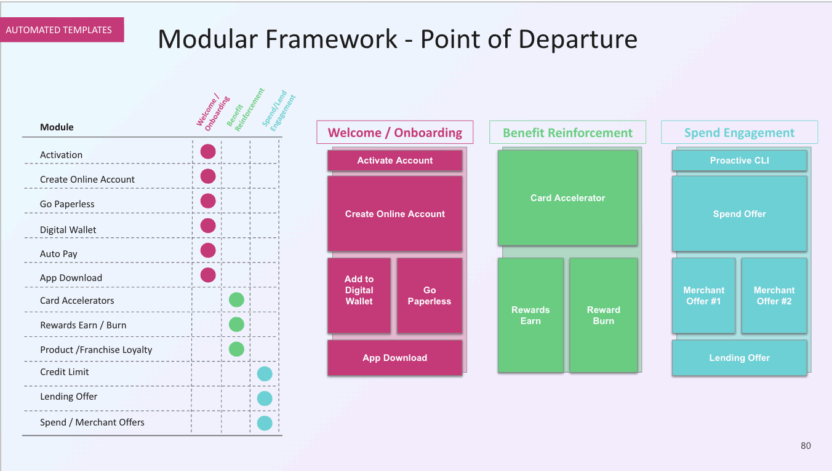
His presentation taught a clear lesson: stop treating evergreen campaigns as static, one-time projects and instead build them as intelligent, automated systems that work for you.
Takeaway #3: The Customer’s Journey isn’t a Funnel, it’s Their Life
As marketers, we spend our time perfecting the customer journey, but customers are just living their lives. Our biggest challenge is “customer myopia,” the inability to see a customer’s world beyond our own sales funnel.
“Every marketer says they’re customer-obsessed—but too often, we’re dashboard-obsessed.” — Tom Fishburne aka Marketoonist
This was the powerful reality check delivered by the cartoonist and keynote speaker Tom Fishburne, aka Marketoonist. Through his relatable cartoons and a hilarious personal story about a broken dishwasher, he argued for a shift from the “funnel vision” to empathy.
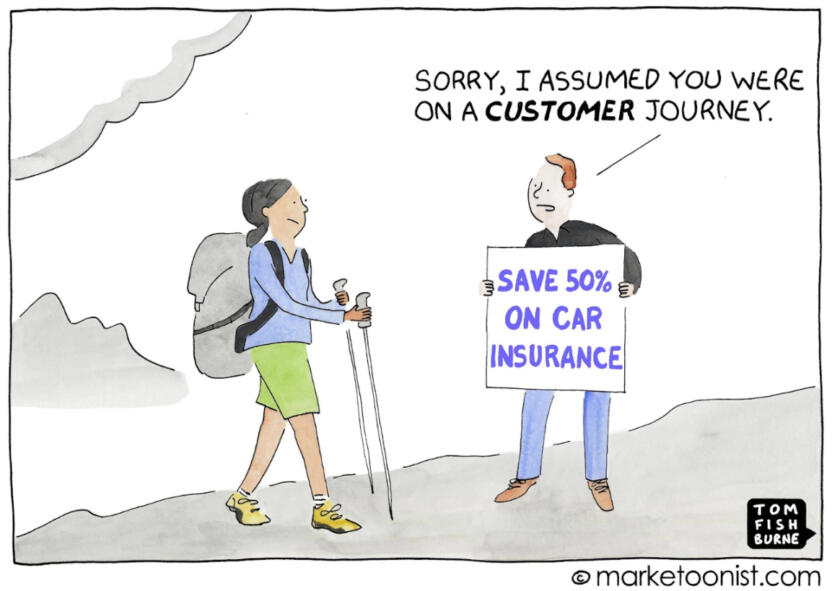
The takeaway from his presentation was simple: True personalization doesn’t come from tracking every click; it comes from understanding customers’ real-world intent and building a brand that is genuinely useful in their daily lives.
Takeaway #4: Humanizing Digital: Replicating the In-Person Connection
The challenge for marketers today is making digital interactions feel as magical and emotionally resonant as in-person ones. While on-premise experiences are built on personal, people-first service, the digital guest journey often feels fragmented and lacks that human touch.
Blair Bendel from Foxwoods explained that the future of engagement lies in using data and AI to seamlessly blend these two worlds. By centralizing data from disparate systems, marketers can go beyond generic messages and create highly curated, real-time experiences that extend the magic of a visit. He provided powerful examples, such as sending a personalized congratulatory message after a jackpot win or inviting a guest back to their favorite restaurant.
“We create highly curated experiences on-property, but what we don’t create are curated experiences through our [digital] communication channels. That’s a huge opportunity.” — Blair Bendel, Senior VP – Marketing, Foxwoods Resorts & Casinos
The core takeaway for marketers, regardless of their industry, is to first identify your unique “in-person magic” (be it a warm welcome or the excitement of a win), and then use data and technology to replicate that feeling in every digital interaction.
Takeaway #5: Looking Beyond ROI and Transactional Metrics
While traditional marketing metrics focus on return on investment (ROI), Bryce Macher from Domino’s challenged marketers to look beyond surface-level transactional metrics and focus on “squishy KPIs” that reflect a deeper, more emotional impact. This includes outcomes such as joy, emotional connection, and customer loyalty.
Bryce explained that an over-reliance on metrics like conversion and lifetime value prevents brands from creating truly magical, heartfelt experiences. For Domino’s, technology isn’t the hero; it’s the invisible force that unlocks joy, whether it’s through a pinpoint delivery to a park or a free pizza after a holiday baking mishap.
“ROI is purely a transactional metric. But what if the next best action is making someone smile?” — Bryce Macher, VP – Decision Science, Domino’s
The ultimate takeaway for marketers is to stop chasing mere transactions and start using data and technology to create moments that make customers smile and build lasting, meaningful relationships.
Closing Thoughts: Adapt or Die in a Nutshell
MoEngage’s Customer Engagement Summit 2025 reinforced a powerful message for modern marketers: while the tools of our trade are becoming increasingly sophisticated, our core purpose remains the same. The most successful brands will be those that use AI and data not to replace human connection, but to enhance it. By prioritizing empathy, understanding a customer’s life beyond the funnel, and measuring the joy we bring to them, we can build a future of marketing that is both more intelligent and more human.
Interested in learning more? Access all the inspiring sessions from The Customer Engagement Summit: Adapt or Die on demand now.

